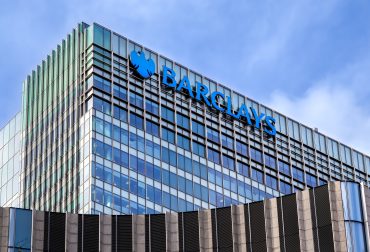

Enterprise technology investments surge across cloud computing and AI solutions as US companies prioritize digital transformation initiatives
Key Takeaways
- US tech spending surges to $2.7 trillion projected for 2025, marking a 6.1% increase as companies accelerate digital transformation and AI integration efforts.
- Global economic uncertainty intensifies as BIS warns of “pivotal moment” driven by trade fragmentation and declining productivity growth worldwide.
- Financial institutions lead technology investments with focus on fraud detection and digital banking as cybersecurity spending rises alongside cloud migration.
Introduction
The technology sector demonstrates remarkable resilience amid global economic uncertainty, with US tech spending projected to reach $2.7 trillion in 2025. This surge reflects companies’ accelerated digital transformation efforts as they navigate challenging economic conditions and geopolitical tensions.
The growth comes as the Bank for International Settlements warns of a “new era of heightened uncertainty” driven by trade fragmentation and policy disruptions. Despite these headwinds, businesses continue investing heavily in cloud solutions, artificial intelligence, and cybersecurity infrastructure.
Key Developments
Technology spending acceleration centers on three primary areas: cloud-based solutions, AI integration, and skills-based workforce development. Financial institutions emerge as the fastest-growing segment, prioritizing fraud detection systems and digital banking platforms.
The BIS assessment reveals mounting challenges to global economic stability. Outgoing BIS head Agustín Carstens identifies US-driven trade tensions and policy shifts as key disruptors of established economic structures.
Economic data shows the dollar declining 10% since the year’s start, attributed to hedging activities by non-US investors. However, BIS economic adviser Hyun Song Shin indicates this movement poses no immediate alarm for broader financial stability.
Market Impact
The tech sector’s 6.1% spending growth rate significantly outpaces broader economic expansion, highlighting technology’s role as a primary growth driver. Software, cloud services, and AI technologies attract the largest investment shares.
Currency markets reflect ongoing uncertainty, with the dollar’s 10% decline impacting global trade dynamics. Despite this volatility, the BIS reports record-high comprehensive income and $1.2 billion net profit, demonstrating institutional resilience.
Cloud and edge computing migration accelerates cybersecurity investments as companies address increasing digital risks. This trend creates substantial market opportunities for security providers and infrastructure companies.
Strategic Insights
Financial services companies position themselves as technology leaders, recognizing digital capabilities as competitive advantages. Their focus on data analytics and automated systems transforms traditional banking operations and customer experiences.
The technology sector’s strategic moves underscore its essential role in economic adaptation. Companies investing in AI and cloud infrastructure gain operational efficiency and market positioning advantages over traditional competitors.
Global economic fragmentation creates both challenges and opportunities for technology providers. While trade tensions complicate supply chains, they also drive demand for domestic technology solutions and digital infrastructure.
Expert Opinions and Data
BIS leadership emphasizes the severity of current economic conditions. “The global economy is at a pivotal moment, entering a new era of heightened uncertainty and unpredictability,” according to recent Reuters.
Economic adviser Hyun Song Shin notes significant currency movements but maintains that broader economic stability remains intact. His analysis suggests current dollar weakness stems from investor hedging rather than fundamental economic problems.
Industry data reveals that post-COVID inflation impacts continue affecting public perception of price movements. This ongoing concern reinforces worries about high public debt levels that reduce crisis response capacity and increase interest rate vulnerability.
Conclusion
Technology spending growth demonstrates the sector’s critical role in economic resilience despite mounting global uncertainties. The 6.1% increase to $2.7 trillion reflects business confidence in digital solutions as essential infrastructure investments.
Financial institutions’ leadership in technology adoption signals broader industry transformation trends. Their emphasis on AI, cloud computing, and cybersecurity establishes frameworks other sectors will likely follow as digital transformation accelerates across the economy.








